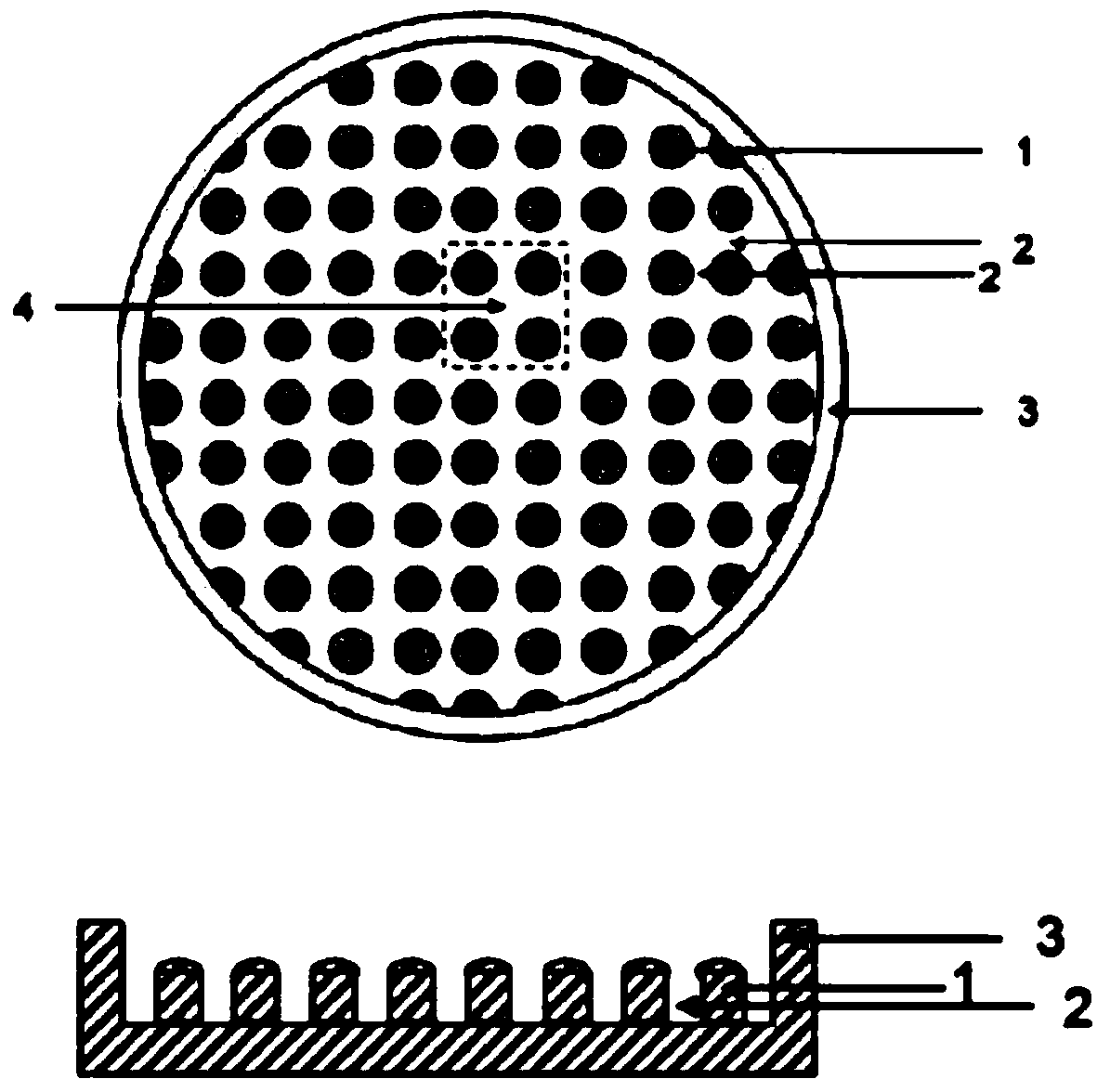Method for producing hiPSCs derived brain-like tissue
A production method and brain tissue technology, applied in biochemical equipment and methods, tissue culture, cells modified by introducing foreign genetic material, etc., can solve the problems of easy coagulation, large consumption, and tediousness, and achieve the goal of reducing the packaging steps Effect
- Summary
- Abstract
- Description
- Claims
- Application Information
AI Technical Summary
Problems solved by technology
Method used
Image
Examples
Embodiment 1
[0051] The present invention provides a new method for producing brain-like tissue derived from hiPSCs, the steps of which are mainly divided into two parts:
[0052] (1) Preparation of high-throughput microcolumn chips;
[0053] (2) Generate brain organoids on a chip;
[0054] The micro-column array chip is formed by the peripheral dam structure of the chip and the surrounding micro-column structure, which can be used for the growth of organoids. The formed area is the brain-like formation area. Its specific structure diagram is figure 1 . figure 1 It is a top view and a cross-sectional view of a PDMS polymer chip with an array microcolumn structure formed by a high-throughput embryoid body in specific embodiment 1; wherein 1 is a microcolumn structure, 2 is a microcolumn spacing, 3 is a chip peripheral dam structure, and 4 is a microcolumn structure. There is a brain tissue formation area surrounded by four microcolumn structures;
[0055] Step (1) preparation of high-t...
Embodiment 2
[0081] The present invention provides a new method for producing brain-like tissue derived from hiPSCs, the steps of which are mainly divided into two parts:
[0082] (1) Preparation of high-throughput microcolumn chips;
[0083] (2) Generate brain organoids on a chip;
[0084] The microcolumn array chip is formed by the peripheral dam structure of the chip and the surrounding microcolumn structure, which can be used for the growth of organoids. The formed area is the brain-like formation area.
[0085] Its production steps are as follows:
[0086] Step (1) preparation of high-throughput microcolumn array chip, specifically:
[0087] (1) Use soft etching technology to prepare SU-8 template, which is a high-throughput concave pit, and then modify the template with low adhesion to ensure easy separation of SU-8 template and PDMS polymer;
[0088] (2) Fabricate a PDMS polymer chip with a high-throughput array microcolumn structure: mix PDMS and initiator 184 at a volume ratio...
Embodiment 3
[0111] The present invention provides a new method for producing brain-like tissue derived from hiPSCs, the steps of which are mainly divided into two parts:
[0112] (1) Preparation of high-throughput microcolumn chips;
[0113] (2) Generate brain organoids on a chip;
[0114] The microcolumn array chip is formed by the peripheral dam structure of the chip and the surrounding microcolumn structure, which can be used for the growth of organoids. The formed area is the brain-like formation area.
[0115] Its production steps are as follows:
[0116] Step (1) preparation of high-throughput microcolumn array chip, specifically:
[0117] (1) Use soft etching technology to prepare SU-8 template, which is a high-throughput concave pit, and then modify the template with low adhesion to ensure easy separation of SU-8 template and PDMS polymer;
[0118] (2) Fabricate a PDMS polymer chip with a high-throughput array microcolumn structure: mix PDMS and initiator 184 at a volume ratio...
PUM
| Property | Measurement | Unit |
|---|---|---|
| diameter | aaaaa | aaaaa |
| height | aaaaa | aaaaa |
| diameter | aaaaa | aaaaa |
Abstract
Description
Claims
Application Information
 Login to View More
Login to View More - R&D
- Intellectual Property
- Life Sciences
- Materials
- Tech Scout
- Unparalleled Data Quality
- Higher Quality Content
- 60% Fewer Hallucinations
Browse by: Latest US Patents, China's latest patents, Technical Efficacy Thesaurus, Application Domain, Technology Topic, Popular Technical Reports.
© 2025 PatSnap. All rights reserved.Legal|Privacy policy|Modern Slavery Act Transparency Statement|Sitemap|About US| Contact US: help@patsnap.com



